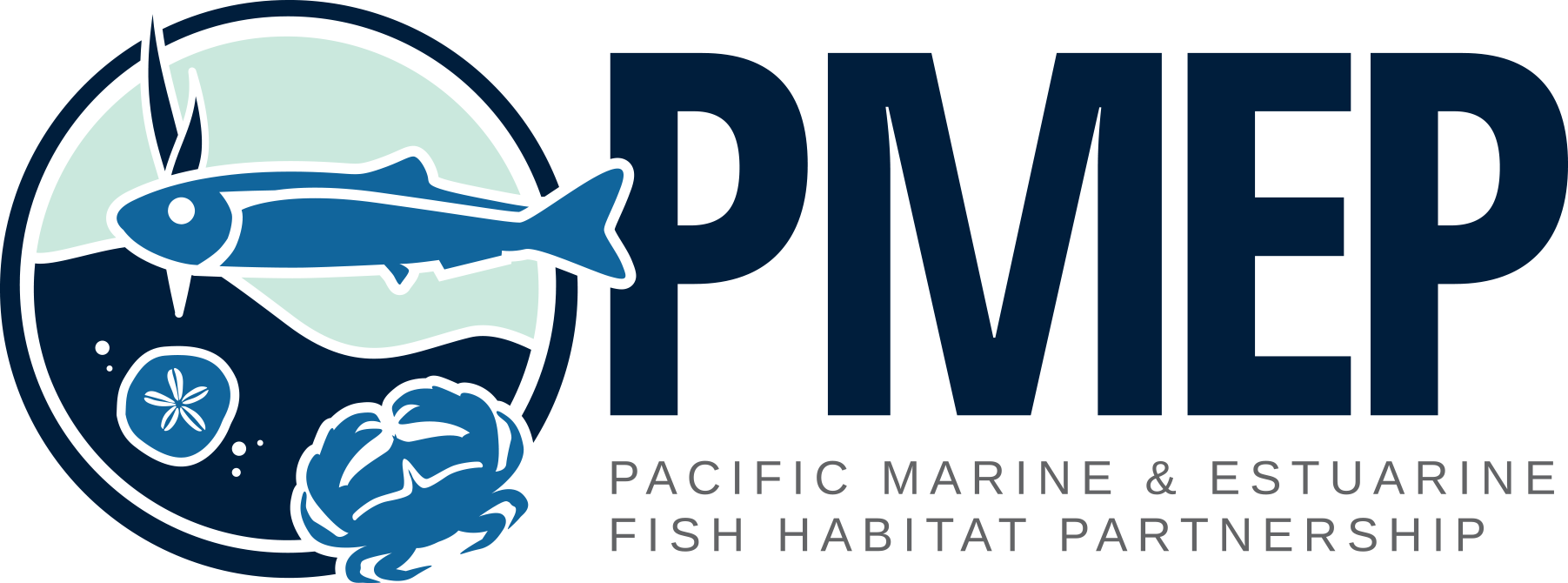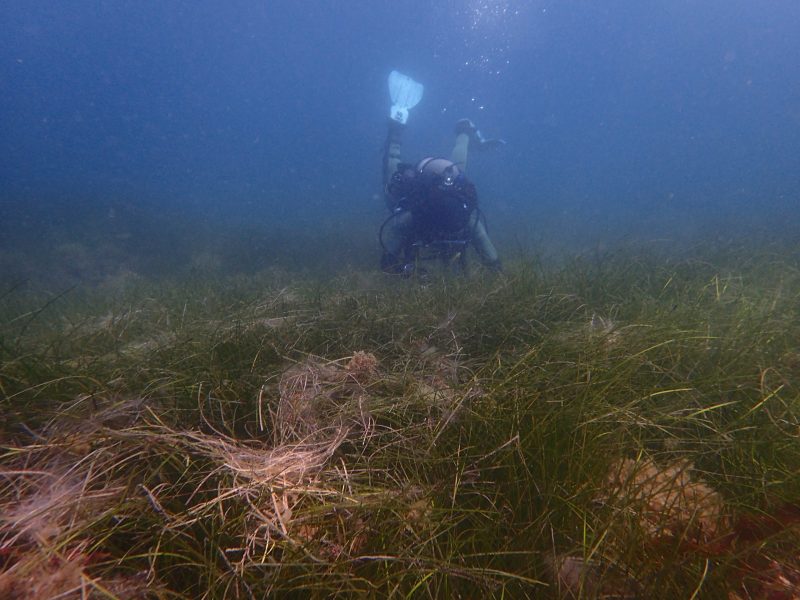
- July 1, 2025
- Joan Drinkwin
- Announcement, Funding
- 0 comments
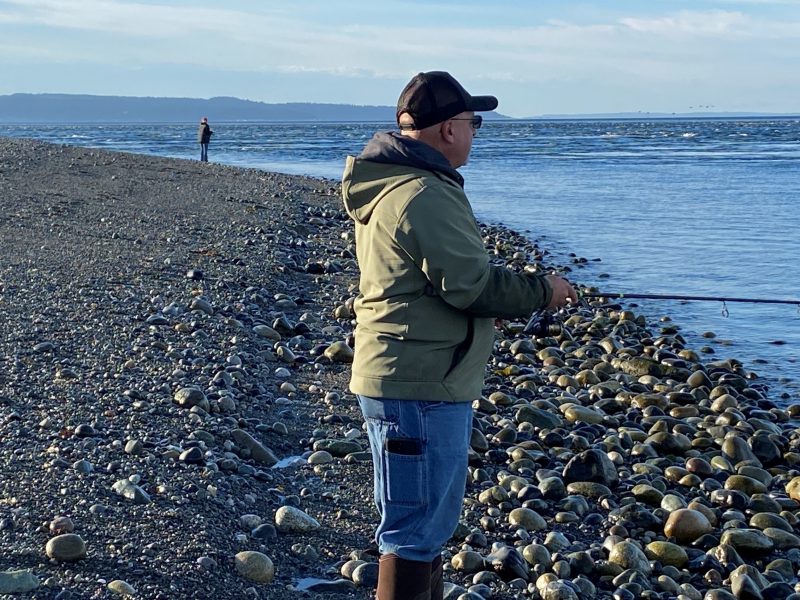
- January 6, 2025
- Joan Drinkwin
- Funding
- 0 comments
The Pacific Marine and Estuarine Fish Habitat Partnership (PMEP) is partnering with NOAA to facilitate proposals for an informal funding opportunity in FY24 for Coastal Fish Habitat Partnership projects that support habitat conservation or restoration and engagement with the recreational fishing community. The total funding available is approximately $150,000.
We are looking for projects that focus on habitat restoration or protection for recreationally important saltwater or diadromous species AND actively engage recreational fishing partners in habitat protection or restoration. This may include, but is not limited to:
a. Direct participation of recreational anglers in habitat projects, including research,
monitoring, and on-the-ground restoration
b. Education and outreach with, by, or for anglers on habitat conservation topics
c. Hosting of an event focused on habitat and recreational fishing opportunity that
engages the recreational fishing community and partners
Sponsors must submit their proposals to PMEP by February 18, 2025 so PMEP can determine its support for the project. Then the project sponsor must submit a completed proposal to NOAA by April 18, 2025.
For the full Request for Proposals and application instructions, go HERE.
Subscribe to our newsletter to ensure you receive announcements of our future RFPs. Subscribe HERE.
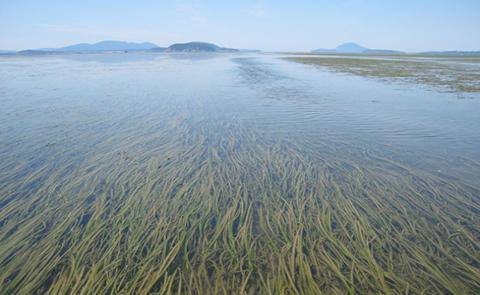
- October 6, 2024
- Joan Drinkwin
- Announcement, Funding
- 0 comments
Deadline for proposal submission is December 2, 2024.
PMEP will award an estimated $250,000-$350,000 in FY2026 for projects that advance its mission. The exact amount of funding available varies annually and is not known at this time. In an effort to fund a diverse portfolio of projects, strong project proposals that request less than $100,000 are preferred. However, proposals of particular merit may be funded at a higher level, at PMEP’s discretion.
PMEP is seeking project proposals that restore, enhance, and protect habitats for fish within estuarine and nearshore marine systems or that increase understanding of fish habitats in estuarine and nearshore habitats along the U.S. West Coast (Washington, Oregon, and California).
For nearshore-focused projects, priority will be given to assessment and restoration projects that address critical challenges to nearshore marine habitats, with a focus on habitats such as kelp forests, seagrass, rocky reefs, biogenic structure (native oysters, sand dollar beds, tube worm reefs), and intertidal and beach spawning habitat. Projects must also clearly identify benefit to fish species.
For estuary-focused projects, priority will be given to projects benefiting smaller estuarine systems defined as having an Estuary Size Class of 0-250 acres in the PMEP Estuary Explorer data tool http://estuaries.pacificfishhabitat.org/explore. However, worthy projects that benefit larger estuarine or nearshore systems will still be considered. Estuary projects must demonstrate benefits to PMEP focal species.
Find the full Request for Proposals and application instructions HERE.
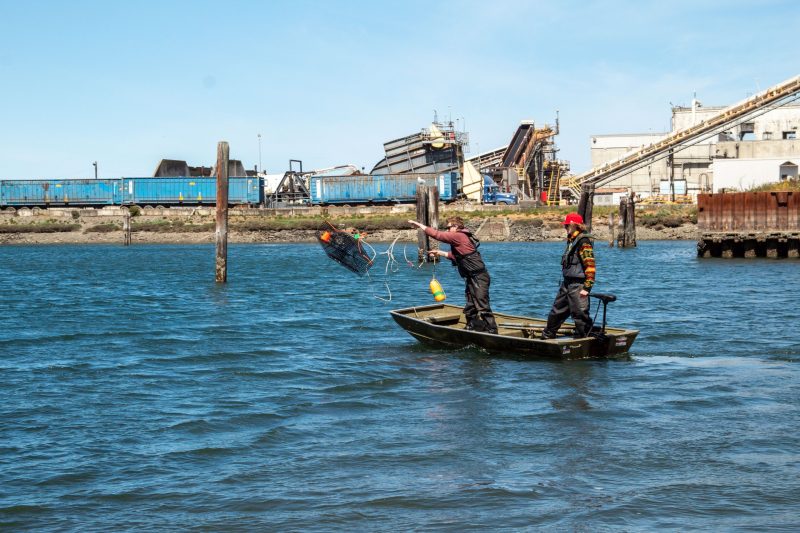
- August 14, 2024
- Joan Drinkwin
- Funding
- 0 comments
PMEP is proud to support the Lower Elwha Klallam Tribe’s Biological Assessment of the Ediz Hook Lagoon with funding from the National Fish Habitat Partnership. The Tribe will conduct field surveys to determine fish and shellfish use of a 28-acre estuarine lagoon at the base of Ediz Hook in Port Angeles, Washington. The project will provide an assessment of what species (fish and shellfish) are present in the lagoon, along with continuous water quality data to inform future restoration/clean-up activities.
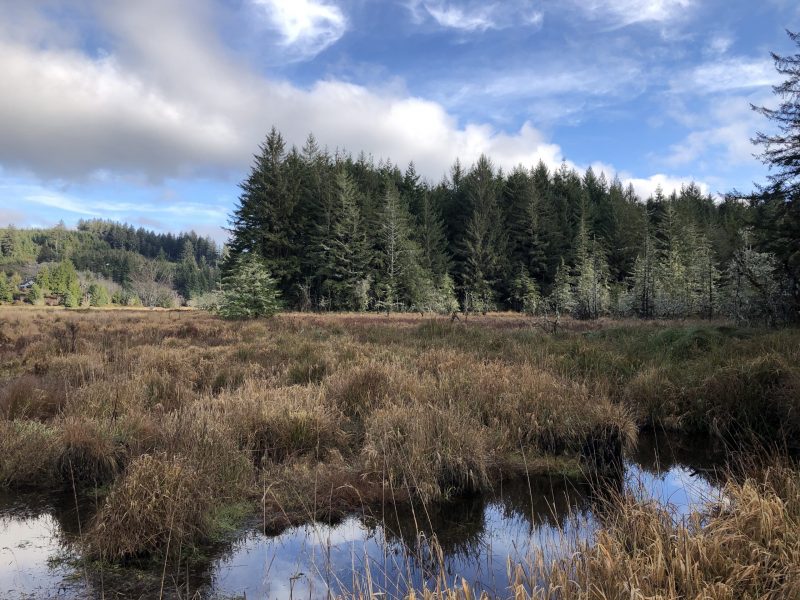
- July 30, 2024
- Joan Drinkwin
- Announcement, Funding
- 0 comments
PMEP is thrilled to provide FY24 National Fish Habitat Partnership funding to the Midcoast Watersheds Council to complete the design of its Bayview Oxbow Tidal Restoration in Alsea Bay, Oregon. When constructed this project will restore tidal conditions to one half of an old oxbow of the Alsea River, restoring about 34% of the tidal wetlands that have been lost. It is one of the largest (75 acre) remaining restoration sites on the Alsea.
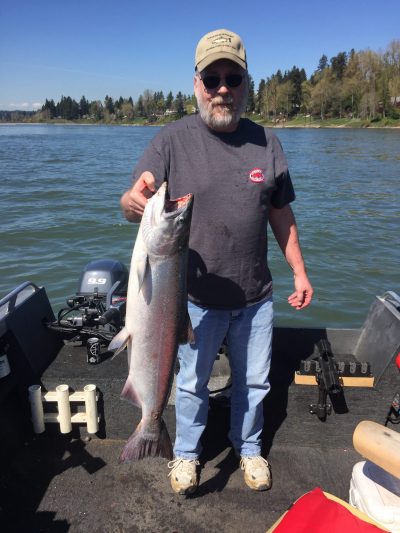
- January 9, 2024
- Joan Drinkwin
- Funding
- 0 comments
The Pacific Marine and Estuarine Fish Habitat Partnership (PMEP) is partnering with NOAA to facilitate proposals for an informal funding opportunity in FY24 for Coastal Fish Habitat Partnership projects that support habitat conservation or restoration and engagement with the recreational fishing community. The total funding available is approximately $150,000.
We are looking for projects that focus on habitat restoration or protection for recreationally important saltwater or diadromous species AND actively engage recreational fishing partners in habitat protection or restoration. This may include, but is not limited to:
a. Direct participation of recreational anglers in habitat projects, including research,
monitoring, and on-the-ground restoration
b. Education and outreach with, by, or for anglers on habitat conservation topics
c. Hosting of an event focused on habitat and recreational fishing opportunity that
engages the recreational fishing community and partners
Sponsors must submit their proposals to PMEP by March 15, 2024 so PMEP can determine its support for the project. Then the project sponsor must submit a completed proposal to NOAA by April 15, 2024.
For the full Request for Proposals and application instructions, go HERE.
Subscribe to our newsletter to ensure you receive announcements of our future RFPs. Subscribe HERE.
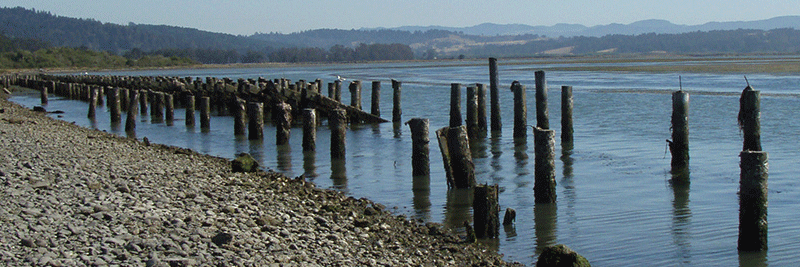
- October 8, 2023
- Joan Drinkwin
- Announcement, Funding
- 0 comments
The Pacific Marine and Estuarine Fish Habitat Partnership (PMEP) requests proposals for projects that restore, enhance, or protect estuarine and nearshore marine fish habitat conservation and restoration along the West Coast. Restoration, acquisition, and assessment projects are eligible. PMEP will award an estimated $250,000-$350,000 in FY2025 for projects that advance its mission. In an effort to fund a diverse portfolio of projects, strong project proposals that request less than $100,000 are preferred. However, proposals of particular merit may be funded at a higher level, at PMEP’s discretion.
The project proposals are due by 5:00PM Friday, December 1, 2023. Project sponsors should assume that funding will be received in Summer of 2025.
Proposals must be submitted online through the Jotform platform.
For more information, access the full Request for Proposals and application instructions HERE
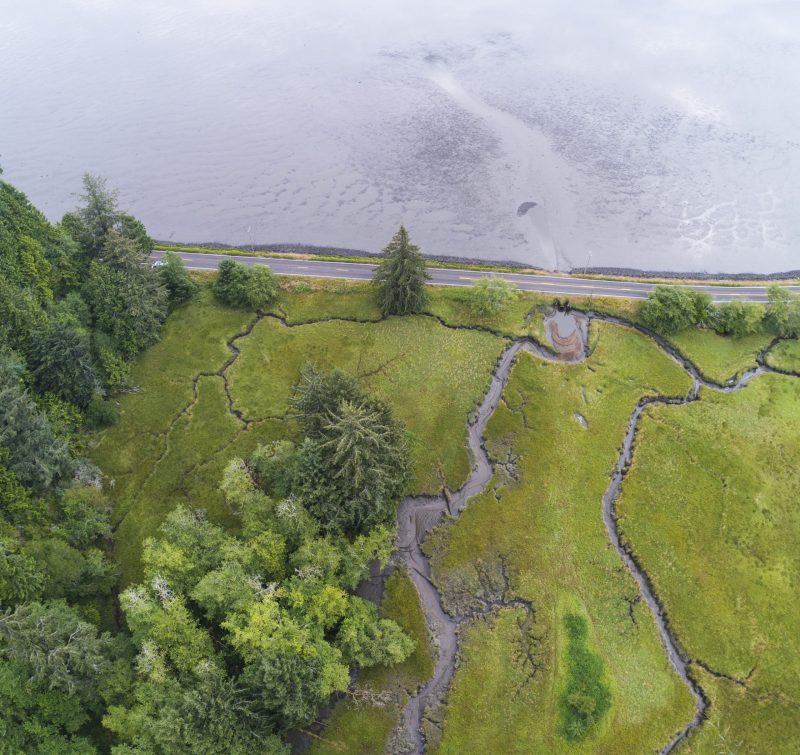
- August 8, 2023
- Joan Drinkwin
- Announcement, Funding
- 0 comments
Flower Pot Creek is a tributary flowing directly into Tillamook Bay. It crosses Bayocean Road, directly before its confluence with Tillamook Bay, at an old, deteriorating, and undersized culvert. This culvert acts as a physical barrier to adequate tidal exchange and a velocity barrier to fish passage during certain flows. Replacing this undersized culvert with a properly sized bridge will increase tidal exchange in the wetland and eliminate a fish barrier. This wetland supports spawning and rearing for Oregon Coast ESU coho salmon, Chinook salmon and steelhead. The Flower Pot Creek Fish Passage and Tidal Reconnection Project, lead by Trout Unlimited, will improve connectivity to approximately 1.4 stream miles and 14.6 acres of tidally influenced wetland. We will replace an undersized, deteriorating culvert with a bridge and streambed simulation. This will correct a fish passage barrier and allow for natural tidal and steam functions to occur. This culvert is highly ranked on the Salmon SuperHwy priority list and the adjacent wetlands are ranked medium-high priority in the Tidal Wetlands Prioritization for Tillamook Bay.
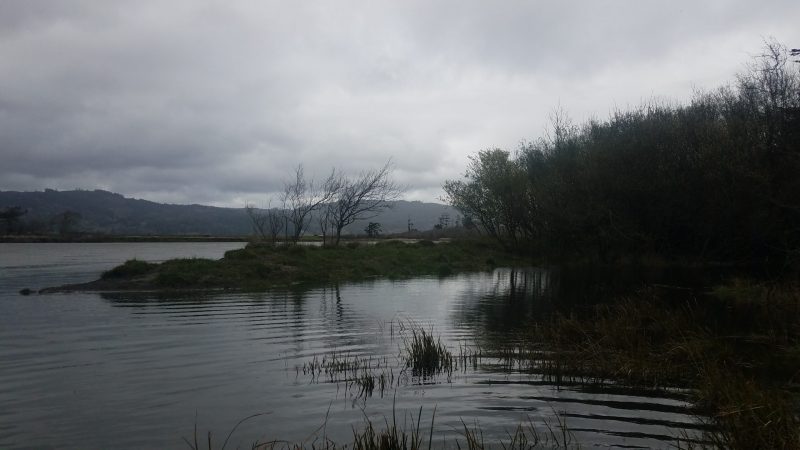
- July 26, 2023
- Joan Drinkwin
- Announcement, Funding
- 0 comments
The Smith River Alliance is leading this project, which will enhance a naturally occurring backwater feature on the south bank of the Smith River estuary, benefitting Southern Oregon and Northern Coastal California ESU Coho salmon, SONCC Chinook salmon, and Klamath Mountain Province Steelhead. The project will increase channel complexity along the mainstem Smith River and addresses impaired estuary function by increasing the quantity and quality of off-channel slow water rearing habitat and benefit up to 8,000 outmigrating Coho salmon smolts. Tidally influenced backwater habitat is extremely beneficial but rare in the Smith River estuary and this project will improve connectivity to this limited habitat. The project will enhance the hydrologic connection to 660 lineal feet of off-channel habitat, and increase the duration and range of flows that migrating and rearing juvenile Coho salmon can access the off-channel habitat feature by 94%. Two large wood structures containing 14 logs will be installed at the entrance and up to 13 single log structures will be installed throughout the backwater. The riparian area will be planted with native species including: 1,386 wetland plants, 114 herbaceous understory plants, 78 shrubs, and 120 trees. Livestock exclusion fencing will be installed along 1,800 feet to permanently exclude cattle from 51 acres of the Smith River estuary.
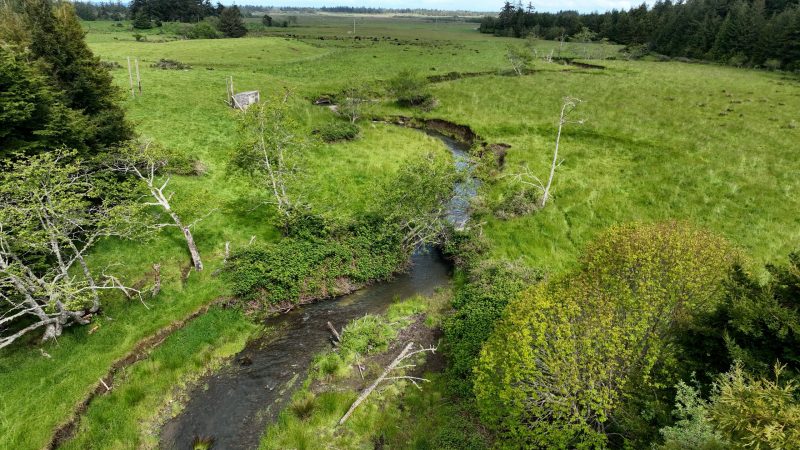
- July 4, 2023
- Joan Drinkwin
- Announcement, Funding
- 0 comments
The Curry Soil and Water Conservation District will restore channel processes, floodplain connectivity, instream and off-channel habitat, and 19 acres of native riparian forest on 2,500 feet of Morton Creek, which at present, is deeply incised and severely impacted by grazing. Restoration will enhance rearing, spawning, and migration habitat for coho salmon and steelhead; as well as Pacific lamprey. Restoration will improve water quality and reduce sedimentation in ~470 acres of freshwater wetland adjacent to the New River estuary. Project will also install riparian fencing and off-channel water to facilitate livestock grazing outside the stream corridor. The project goals are to improve water quality and instream habitat; restore floodplain connectivity and dynamic fluvial processes; enhance fish migration between upstream spawning and downstream rearing habitat; stabilize chronic bank erosion; and prevent pollutant loading to downstream fresh water wetlands and the New River estuary. The project involves construction of 2,500 feet of stream channel, 5.4 acres of floodplain topography, 800 feet of off-channel aquatic habitat, 20-30 instream log structures, 2 vehicle bridges, 2,500 feet of livestock exclusion fence, and an off-stream livestock water system; and the project will plant and maintain 21,000 seedlings, to restore 19 acres of native riparian forest.
